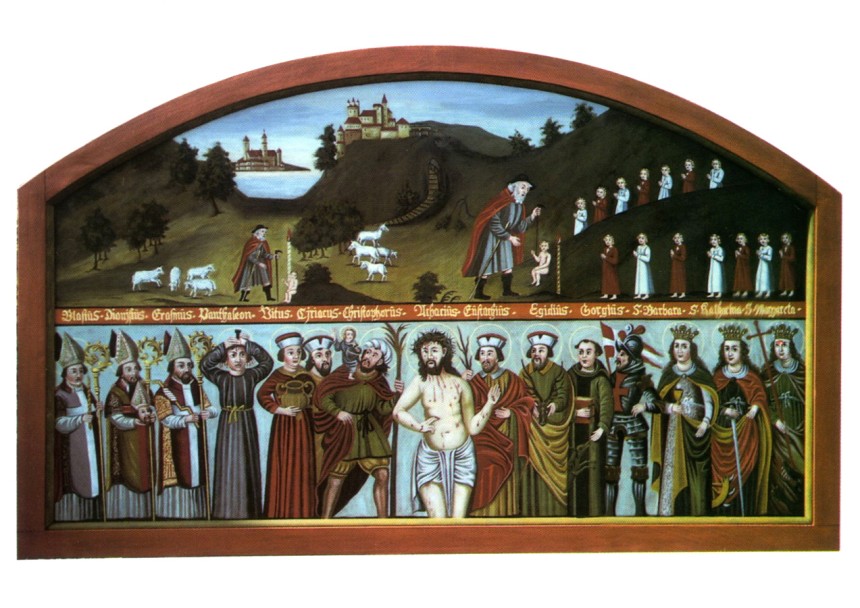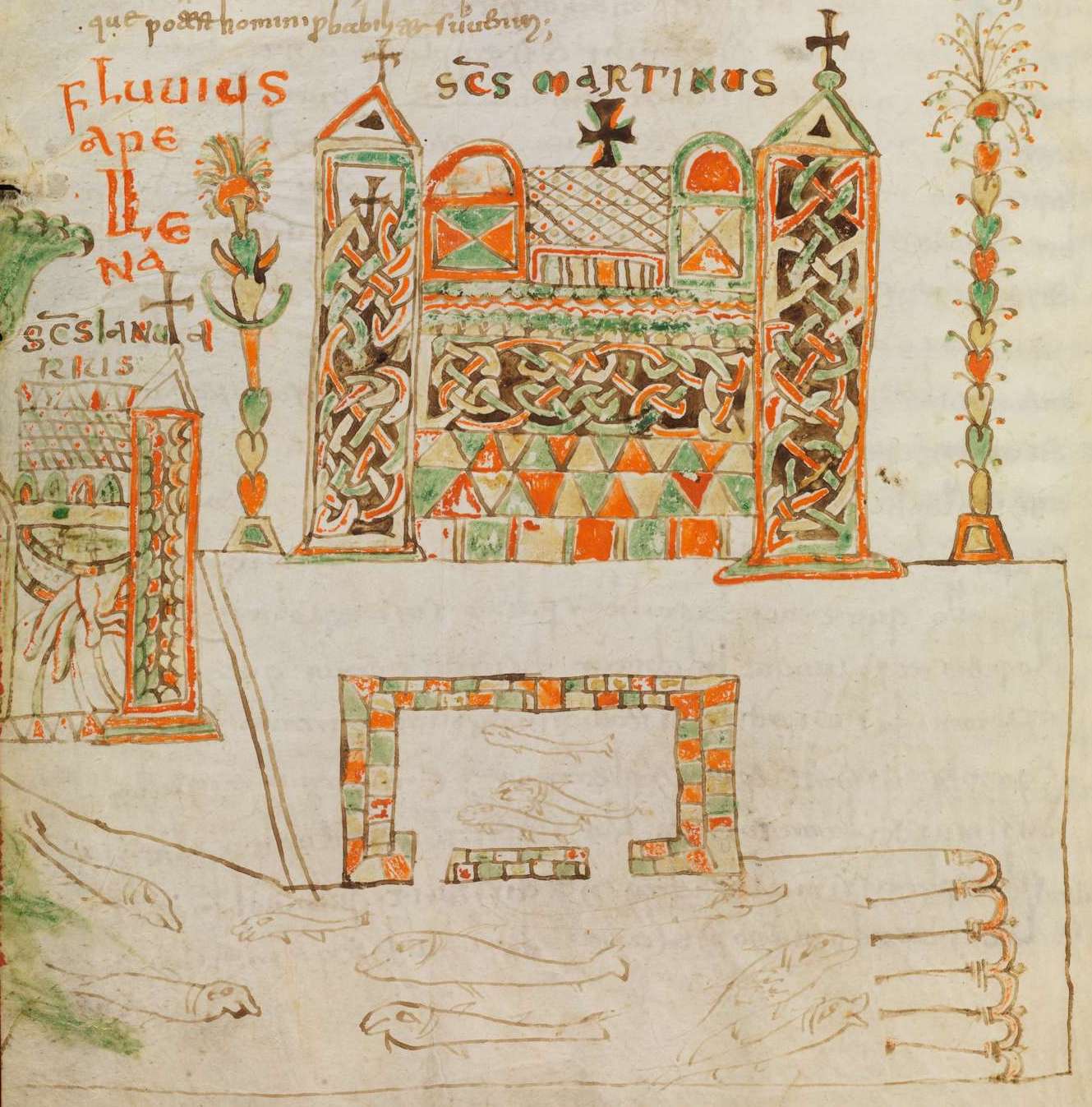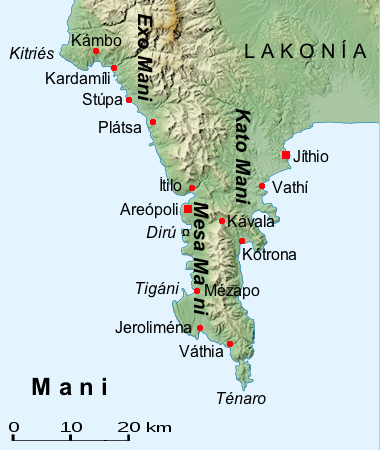|
Agathius
Saint Agathius (Greek: Ἅγιος Ἀκάκιος; died 303), also known as Acacius of Byzantium, Achatius, or Agathonas to Christian tradition, was a Cappadocian Greek centurion of the imperial army, martyred around 304. A church existed in Constantinople associated with Acacius and possibly named after him: the Church of St Acacius. History Agathius was arrested on charges for being a Christian by Tribune Firmus in Perinthus, Thrace, tortured and then brought to Byzantium where he was scourged and beheaded, being made a martyr because he would not renounce his Christian faith. The date of his martyrdom is traditionally May 8, when his feast is observed. Veneration His relics were relocated ''ca.'' 630 to a spring at Squillace, close by the Vivarium, the monastery founded in the previous century by Cassiodorus in the heel of Italy. He was known in Squillace as ''San Agario''. A relic of his arm was brought to Guardavalle in 1584 by the bishop of Squillace, Marcello Sirle ... [...More Info...] [...Related Items...] OR: [Wikipedia] [Google] [Baidu] |
Fourteen Holy Helpers
The Fourteen Holy Helpers (german: Vierzehn Nothelfer, la, Quattuordecim auxiliatores) are a group of saints venerated together by Roman Catholic Christians because their intercession is believed to be particularly effective, especially against various diseases. This group of ''Nothelfer'' ("helpers in need") originated in the 14th century at first in the Rhineland, largely as a result of the epidemic (probably of bubonic plague) that became known as the Black Death. History of veneration Devotion to the fourteen Holy Helpers began in Rhineland, now part of Germany, in the time of the Black Death. Among the fourteen were three virgin martyrs. A German mnemonic for them says: ''Margaretha mit dem Wurm,'' ''Barbara mit dem Turm,'' ''Katharina mit dem Radl'' ''das sind die drei heiligen Madl.'' ("Margaret with the lindworm, Barbara with the tower, Catherine with the wheel, those are the three holy maids.") As the other saints began to be invoked along with these three vi ... [...More Info...] [...Related Items...] OR: [Wikipedia] [Google] [Baidu] |
Cassiodorus
Magnus Aurelius Cassiodorus Senator (c. 485 – c. 585), commonly known as Cassiodorus (), was a Roman statesman, renowned scholar of antiquity, and writer serving in the administration of Theodoric the Great, king of the Ostrogoths. ''Senator'' was part of his surname; not his rank. He also founded a monastery, Vivarium, where he spent the last years of his life. Life Cassiodorus was born at Scylletium, near Catanzaro in Calabria, Italy. Some modern historians speculate that his family was of Syrian origin based on his Greek name. His ancestry included some of the most prominent ministers of the state extending back several generations. His great-grandfather held a command in the defense of the coasts of southern Italy from Vandal sea-raiders in the middle of the fifth century; his grandfather appears in a Roman embassy to Attila the Hun, and his father (who bore the same name) served as ''comes sacrarum largitionum'' and ''comes rerum privatarum'' to Odovacer and as Pra ... [...More Info...] [...Related Items...] OR: [Wikipedia] [Google] [Baidu] |
Squillace
Squillace ( grc, Σκυλλήτιον ''Skylletion''; grc-x-medieval, Σκυλάκιον ''Skylakion'') is an ancient town and ''comune'', in the Province of Catanzaro, part of Calabria, southern Italy, facing the Gulf of Squillace. Squillace is situated near the east coast of Calabria, close to the shores of an extensive bay, the Gulf of Squillace ( it, Golfo di Squillace), which indents the coast of Calabria on the east as deeply as that of the Gulf of Saint Euphemia (Italian: ''Golfo di Sant'Eufemia'') does on the west, with a comparatively narrow isthmus between them. History Squillace is known today as one of Italy's most important archaeological sites as well as a popular resort. The name derives from the ancient city of Scylletium, the principal ruins of which are located in the nearby comune of Borgia. The Roman statesman and writer Cassiodorus founded a monastery called Vivarium on his family estates on the shores of the Ionian Sea in the 6th century AD. This monast ... [...More Info...] [...Related Items...] OR: [Wikipedia] [Google] [Baidu] |
Church Of St Acacius
The Church of St Acacius was an early Christian church in Constantinople (modern-day İstanbul, Turkey). It may have been dedicated to a military saint and martyr of the Diocletianic Persecution, Saint Acacius ( 10 May 305), or it may have acquired its name from a ''comes'' Acacius, an official under the ''augustus'' Constantine the Great (). The Church of St Acacius was one of the earliest churches of Constantinople, the city which Constantine founded in 328 in the city of Byzantium after his and his son, the ''caesar'' Crispus's, victory at the Battle of Chrysopolis over the ''augustus'' Licinius. The church is known to have been associated with the name Acacius from the early 5th century at latest. History In the 5th century, the church is mentioned in the ''Ecclesiastical History'' of Socrates of Constantinople, written , which treats of an incident in the preceding century: the city's bishop, Macedonius I of Constantinople () angered the ruling ''augustus'' Constantius II ... [...More Info...] [...Related Items...] OR: [Wikipedia] [Google] [Baidu] |
Scourge
A scourge is a whip or lash, especially a multi-thong type, used to inflict severe corporal punishment or self-mortification. It is usually made of leather. Etymology The word is most commonly considered to be derived from Old French ''escorgier'' - "to whip", going further back to the Vulgar Latin ''excorrigiare'': the Latin prefix ''ex''- "out, off" with its additional English meaning of "thoroughly", plus ''corrigia'' - "thong", or in this case "whip". Some connect it to la, excoriare, "to flay", built of two Latin parts, ''ex''- ("off") and , "skin". Description A scourge ( la, flagrum; diminutive: ) consists of a rope with metal balls, bones, and metal spikes. The scourge, or flail, and the crook are the two symbols of power and domination depicted in the hands of Osiris in Egyptian monuments. The shape of the flail or scourge is unchanged throughout history. However, when a scourge is described as a 'flail' as depicted in Egyptian mythology, it may be referring to u ... [...More Info...] [...Related Items...] OR: [Wikipedia] [Google] [Baidu] |
Ottoman Empire
The Ottoman Empire, * ; is an archaic version. The definite article forms and were synonymous * and el, Оθωμανική Αυτοκρατορία, Othōmanikē Avtokratoria, label=none * info page on book at Martin Luther University) // CITED: p. 36 (PDF p. 38/338) also known as the Turkish Empire, was an empire that controlled much of Southeast Europe, Western Asia, and Northern Africa between the 14th and early 20th centuries. It was founded at the end of the 13th century in northwestern Anatolia in the town of Söğüt (modern-day Bilecik Province) by the Turkoman tribal leader Osman I. After 1354, the Ottomans crossed into Europe and, with the conquest of the Balkans, the Ottoman beylik was transformed into a transcontinental empire. The Ottomans ended the Byzantine Empire with the conquest of Constantinople in 1453 by Mehmed the Conqueror. Under the reign of Suleiman the Magnificent, the Ottoman Empire marked the peak of its power and prosperity, as well a ... [...More Info...] [...Related Items...] OR: [Wikipedia] [Google] [Baidu] |
Greece
Greece,, or , romanized: ', officially the Hellenic Republic, is a country in Southeast Europe. It is situated on the southern tip of the Balkans, and is located at the crossroads of Europe, Asia, and Africa. Greece shares land borders with Albania to the northwest, North Macedonia and Bulgaria to the north, and Turkey to the northeast. The Aegean Sea lies to the east of the mainland, the Ionian Sea to the west, and the Sea of Crete and the Mediterranean Sea to the south. Greece has the longest coastline on the Mediterranean Basin, featuring thousands of islands. The country consists of nine traditional geographic regions, and has a population of approximately 10.4 million. Athens is the nation's capital and largest city, followed by Thessaloniki and Patras. Greece is considered the cradle of Western civilization, being the birthplace of democracy, Western philosophy, Western literature, historiography, political science, major scientific and mathematica ... [...More Info...] [...Related Items...] OR: [Wikipedia] [Google] [Baidu] |
Mani Peninsula
The Mani Peninsula ( el, Μάνη, Mánē), also long known by its medieval name Maina or Maïna (Μαΐνη), is a geographical and cultural region in Southern Greece that is home to the Maniots (Mανιάτες, ''Maniátes'' in Greek), who claim descent from the ancient Spartans. The capital city of Mani is Areopoli. Mani is the central peninsula of the three which extend southwards from the Peloponnese in southern Greece. To the east is the Laconian Gulf, to the west the Messenian Gulf. The Mani peninsula forms a continuation of the Taygetos mountain range, the western spine of the Peloponnese. Etymology The name "Mani" may come from the albanian word mani meaning mullbery Geography The terrain is mountainous and inaccessible. Until recent years many Mani villages could be reached only by sea. Today a narrow and winding road extends along the west coast from Kalamata to Areopoli, then south to Akrotainaro (the pointed cape, which is the southernmost point of contin ... [...More Info...] [...Related Items...] OR: [Wikipedia] [Google] [Baidu] |
Maniots
The Maniots or Maniates ( el, Μανιάτες) are the inhabitants of Mani Peninsula, located in western Laconia and eastern Messenia, in the southern Peloponnese, Greece. They were also formerly known as Mainotes and the peninsula as ''Maina''. The Maniots claim to be the descendants of the ancient Spartans and they have often been described as such. The terrain is mountainous and inaccessible (until recently many Mani villages could be accessed only by sea), and the regional name "Mani" is thought to have meant originally "dry" or "barren". The name "Maniot" is a derivative meaning "of Mani". In the early modern period, Maniots had a reputation as fierce and proudly independent warriors, who practiced piracy and fierce blood feuds. For the most part, the Maniots lived in fortified villages (and "house-towers") where they defended their lands against the armies of William II Villehardouin and later against those of the Ottoman Empire. Names The surnames of the Maniots uni ... [...More Info...] [...Related Items...] OR: [Wikipedia] [Google] [Baidu] |
Ottoman Turks
The Ottoman Turks ( tr, Osmanlı Türkleri), were the Turkic founding and sociopolitically the most dominant ethnic group of the Ottoman Empire ( 1299/1302–1922). Reliable information about the early history of Ottoman Turks remains scarce, but they take their Turkish name, ''Osmanlı'' ("Osman" became altered in some European languages as "Ottoman"), from the house of Osman I (reigned 1299–1326), the founder of the House of Osman, the ruling dynasty of the Ottoman Empire for its entire 624 years. Expanding from its base in Söğüt, the Ottoman principality began incorporating other Turkish-speaking Muslims and non-Turkish Christians. Crossing into Europe from the 1350s, coming to dominate the Mediterranean Sea and, in 1453, invading Constantinople (the capital city of the Byzantine Empire), the Ottoman Turks blocked all major land routes between Asia and Europe. Western Europeans had to find other ways to trade with the East. Brief history The "Ottomans" fir ... [...More Info...] [...Related Items...] OR: [Wikipedia] [Google] [Baidu] |
Slovenia
Slovenia ( ; sl, Slovenija ), officially the Republic of Slovenia (Slovene: , abbr.: ''RS''), is a country in Central Europe. It is bordered by Italy to the west, Austria to the north, Hungary to the northeast, Croatia to the southeast, and the Adriatic Sea to the southwest. Slovenia is mostly mountainous and forested, covers , and has a population of 2.1 million (2,108,708 people). Slovenes constitute over 80% of the country's population. Slovene, a South Slavic language, is the official language. Slovenia has a predominantly temperate continental climate, with the exception of the Slovene Littoral and the Julian Alps. A sub-mediterranean climate reaches to the northern extensions of the Dinaric Alps that traverse the country in a northwest–southeast direction. The Julian Alps in the northwest have an alpine climate. Toward the northeastern Pannonian Basin, a continental climate is more pronounced. Ljubljana, the capital and largest city of Slovenia, is geogr ... [...More Info...] [...Related Items...] OR: [Wikipedia] [Google] [Baidu] |
Spain
, image_flag = Bandera de España.svg , image_coat = Escudo de España (mazonado).svg , national_motto = ''Plus ultra'' (Latin)(English: "Further Beyond") , national_anthem = (English: "Royal March") , image_map = , map_caption = , image_map2 = , capital = Madrid , coordinates = , largest_city = Madrid , languages_type = Official language , languages = Spanish , ethnic_groups = , ethnic_groups_year = , ethnic_groups_ref = , religion = , religion_ref = , religion_year = 2020 , demonym = , government_type = Unitary parliamentary constitutional monarchy , leader_title1 = Monarch , leader_name1 = Felipe VI , leader_title2 = Prime Minister , leader_name2 = Pedro Sánchez , legislature = C ... [...More Info...] [...Related Items...] OR: [Wikipedia] [Google] [Baidu] |




